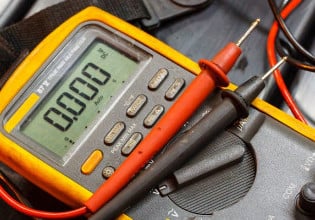Enabling Advanced Automation With Omron’s New NX5 Series PLC
Omron’s NX5 series PLC is designed with IIoT in mind, including standard OPC UA and direct connection to relational databases such as SQL, all without the need for additional hardware or licensing.
Omron has been a major manufacturer of automation and electrical components to the industry for over 90 years. Omron’s product line ranges from electrical control to machine safety and from machine vision to robotics.
PLCs from Omron Automation
Omron also offers a complete line of machine automation controllers or PLCs. Similar to other PLC manufacturers, they offer models for micro, medium-sized, and large-sized automation applications. Recently, the NX5 PLC has made its debut into the automation community as a medium-sized PLC capable of many IIoT application benefits usually reserved for larger automation controllers.

New NX5 PLC from Omron Automation Image used courtesy of Omron
NX5 PLC
With any PLC, there are bound to be some limitations. Typically, these limitations include the number of motion axis, the number of Ethernet nodes, and the memory size allocated for programming. The NX5 is capable of supporting an impressive 64 coordinated motion axis on one processor. Other PLCs of this size typically only support 16 axes.
Most PLCs will support between 32 to 64 Ethernet nodes, including CIP safety nodes, but the NX5 will support up to 254 CIP safety nodes and 256 EtherCAT nodes. If the two Ethernet ports on the front of the unit are not enough for your application, the NX5 is capable of adding up to 4 additional Ethernet/IP cards on the left side of the unit. Each card creates its own isolated network, increasing cybersecurity potential because there is no direct outside connection to the machine network. All network traffic from the additional ethernet cards needs to be processed through the CPU of the PLC. The additional cards can also increase the capacity of the machine network as they are Ethernet/IP capable.
Regarding memory, PLC programs typically do not take up much storage space, with most entire automation assembly line programs being smaller in size than a standard digital picture. The NX5 comes equipped with 80 MB of programmable memory, compared to most PLCs this size, which are less than 10 MB.

Omron Ethernet module to expand communications with two front-side Ethernet ports. Image used courtesy of Omron
Data Collection and Communication
Collecting processing data or machine data is becoming a very popular request from machine builders, but a major challenge remains to be that of getting the data out of the PLC to a storage location. While other PLC manufacturers have relied on open-source protocols with some success, others have developed their own protocols to communicate with an in-house or cloud database.
The NX5 has the ability to connect to a relational database and perform in-line style queries such as insert, update, retrieve, and delete, as well as call stored procedures and batch insert commands. This connection protocol is available without additional licensing or extra hardware and supports popular database software such as Microsoft SQL, Oracle, MySQL, Firebird, and PostgreSQL Standard communication blocks can be developed and then stored in the library for repetitive use in multiple projects.
The NX5 also offers OPC UA protocol as a standard option. With OPC UA, tag values can be easily retrieved in a secure manner, and since OPC UA is a standard open-source protocol, just about any programming language can connect to the OPC UA server and view PLC data.

Networking options available for the Omron NX5 PLC series. Image used courtesy of Omron
Applications of IIoT for PLCs
Automating equipment almost always requires a PLC or some form of advanced controller, and with IIoT building steam, PLC manufacturers need to advance closer to the IT world. Offering a PLC that is capable of connecting to a database without additional licensing or hardware allows machine builders to provide their customers with flexible data collection abilities and future-proof designs.






